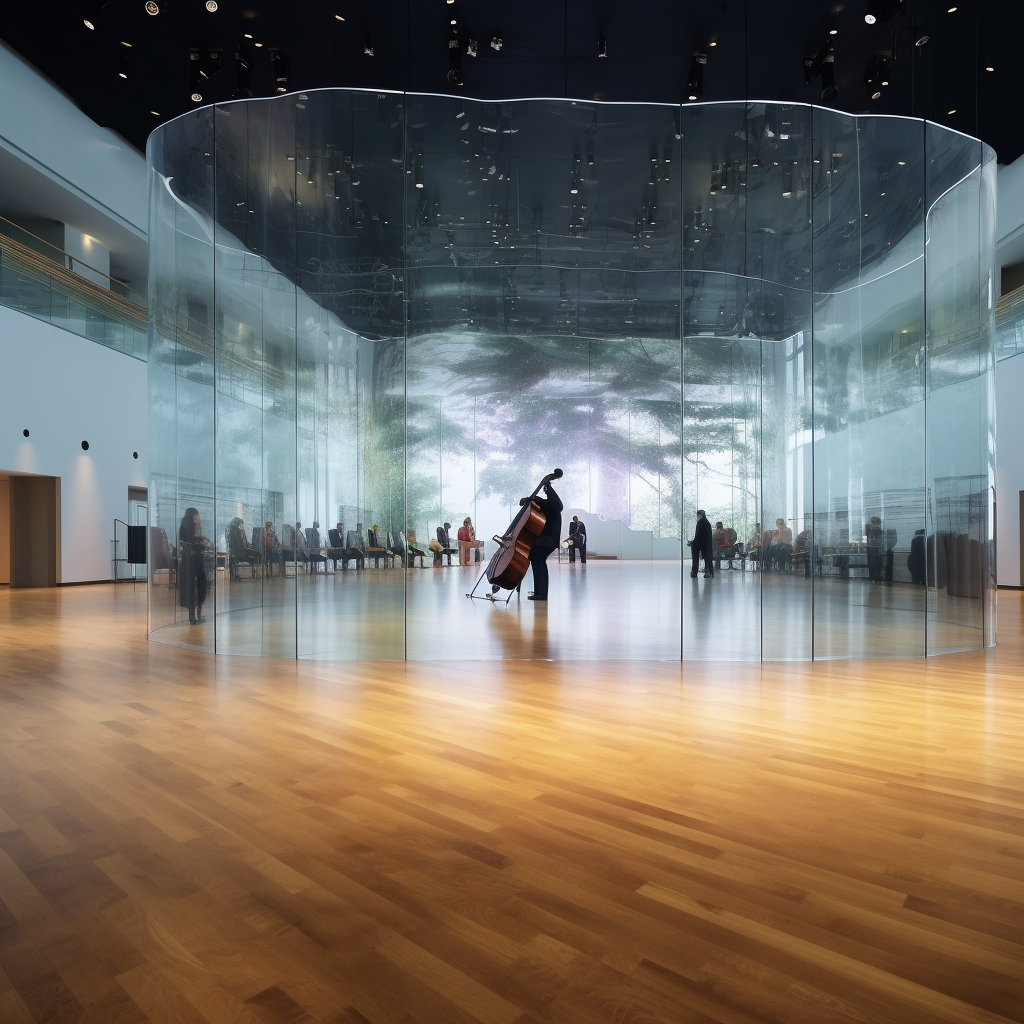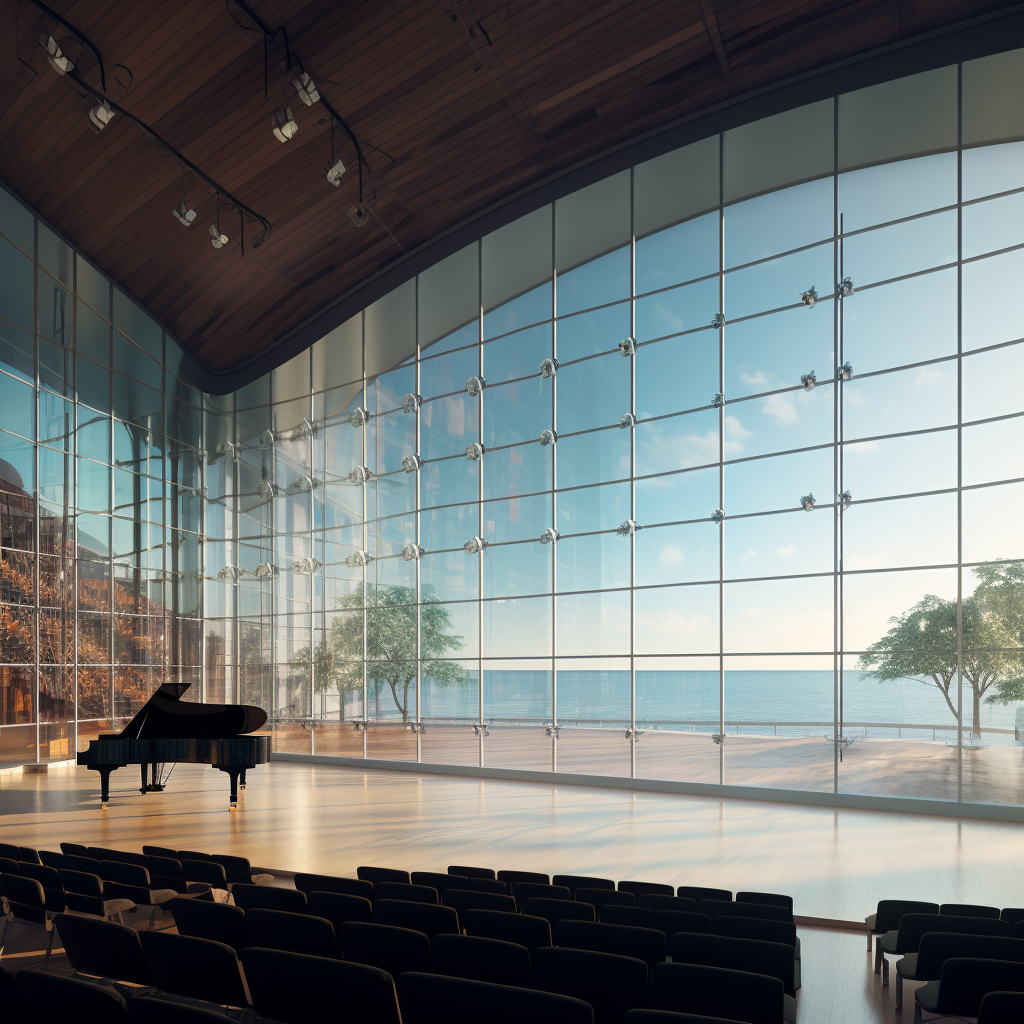Creating Harmonious Spaces
Acoustic design or what I consider invisible design, has a profound impact on our built environment. It encompasses the study and manipulation of sound within a space, with the aim of creating environments that are acoustically comfortable and enhance human experience. Here we will explore the significance of acoustic design in architecture, examining its effects on functionality, occupant well-being, and overall architectural quality. From reducing noise pollution to optimizing speech intelligibility and fostering a sense of tranquility, acoustic design plays a vital role in shaping the character and usability of architectural spaces.
Noise Control and Mitigation
One of the primary objectives of acoustic design is to control and mitigate noise within a building. By carefully considering the architectural layout, materials, and insulation, designers can minimize the transmission of unwanted noise from external sources or between different internal spaces. This is particularly critical in environments such as hospitals, educational institutions, and offices, where excessive noise can negatively impact concentration, productivity, and overall well-being. Acoustic design interventions, such as the use of sound-absorbing materials, strategic placement of partitions, and mechanical system design, help create quieter and more peaceful spaces, enhancing the overall quality of life for occupants.
Speech Intelligibility and Privacy
In spaces where communication is essential, such as auditoriums, conference rooms, and classrooms, acoustic design plays a pivotal role in ensuring clear speech intelligibility. Through the careful consideration of reverberation, background noise, and sound reflection, architects can create environments that promote effective communication. Properly designed acoustic treatments, such as sound-absorbing panels, diffusers, and strategic placement of microphones and speakers, improve sound clarity, allowing individuals to understand and engage with spoken information more effectively. Additionally, acoustic design considerations also extend to providing privacy within spaces, such as offices or healthcare facilities, where confidential conversations are crucial. By implementing sound insulation and utilizing design strategies that reduce sound leakage, acoustic design helps maintain privacy and confidentiality.
Emotional Well-being and Productivity
Acoustic design has a profound impact on the emotional well-being and productivity of occupants. Excessive noise levels and poor acoustic quality can lead to stress, fatigue, and decreased productivity. On the other hand, well-designed acoustic environments that balance ambient sound, control echoes, and provide a comfortable auditory experience promote a sense of calm and enhance concentration. Incorporating elements such as natural sounds, music, and the use of sound masking techniques can create soothing environments that reduce stress and increase overall comfort. Architects and designers who prioritize acoustic considerations in their projects contribute to creating spaces that promote well-being, creativity, and productivity.
Aesthetics and Architectural Quality
Beyond the functional aspects, acoustic design also influences the overall architectural quality and aesthetics of a space. Integrating acoustic treatments seamlessly into the design enhances the visual appeal of the space while improving its acoustic performance. Acoustic elements, such as sculptural ceiling panels, diffusers, or wall coverings, can be creatively incorporated to create visually striking spaces that also enhance sound quality. By blending aesthetics with acoustic functionality, architects can create spaces that not only look impressive but also offer exceptional acoustic experiences, immersing occupants in a multisensory environment.
Design Considerations for Effective Acoustic Control
Architects employ various strategies and techniques to achieve effective acoustic control. Key design considerations include:
Sound Absorption: Incorporating materials and surfaces with sound-absorbing properties, such as acoustic ceiling panels, wall panels, and floor coverings, helps reduce sound reverberation and echo.
Sound Insulation: Proper sound insulation involves minimizing the transmission of sound between different spaces, preventing noise from entering or exiting a room or building. Techniques include using soundproofing materials, insulation, and strategic placement of barriers.
Room Acoustics: Designing spaces with appropriate room acoustics is essential to ensure optimal sound quality and speech intelligibility. Factors such as room dimensions, shape, and surface finishes are considered to control sound reflections and achieve the desired acoustic characteristics.
Noise Control: Addressing external noise sources, such as traffic, mechanical equipment, or neighboring activities, is crucial in creating a serene indoor environment. Techniques include site planning, building orientation, and implementing noise barriers.
HVAC System Design: Heating, ventilation, and air conditioning (HVAC) systems can contribute to noise pollution if not properly designed. Integrating noise-reducing HVAC equipment and implementing effective ductwork insulation helps minimize noise transmission.
Sound Masking: In open-plan office environments or public spaces, sound masking systems emit low-level background noise to mask distracting sounds and provide speech privacy.
Acoustic design is a critical component of architecture, shaping the way we experience and interact with the built environment. By addressing noise control, speech intelligibility, emotional well-being, and aesthetics, acoustic design plays a vital role in creating harmonious and functional spaces. Architects and designers who prioritize acoustic considerations contribute to the overall quality of life for occupants, promoting productivity, comfort, and well-being. Embracing the principles of acoustic design ensures that our buildings and spaces not only look visually appealing but also provide a sound experience that enhances human interaction and enriches our daily lives.







